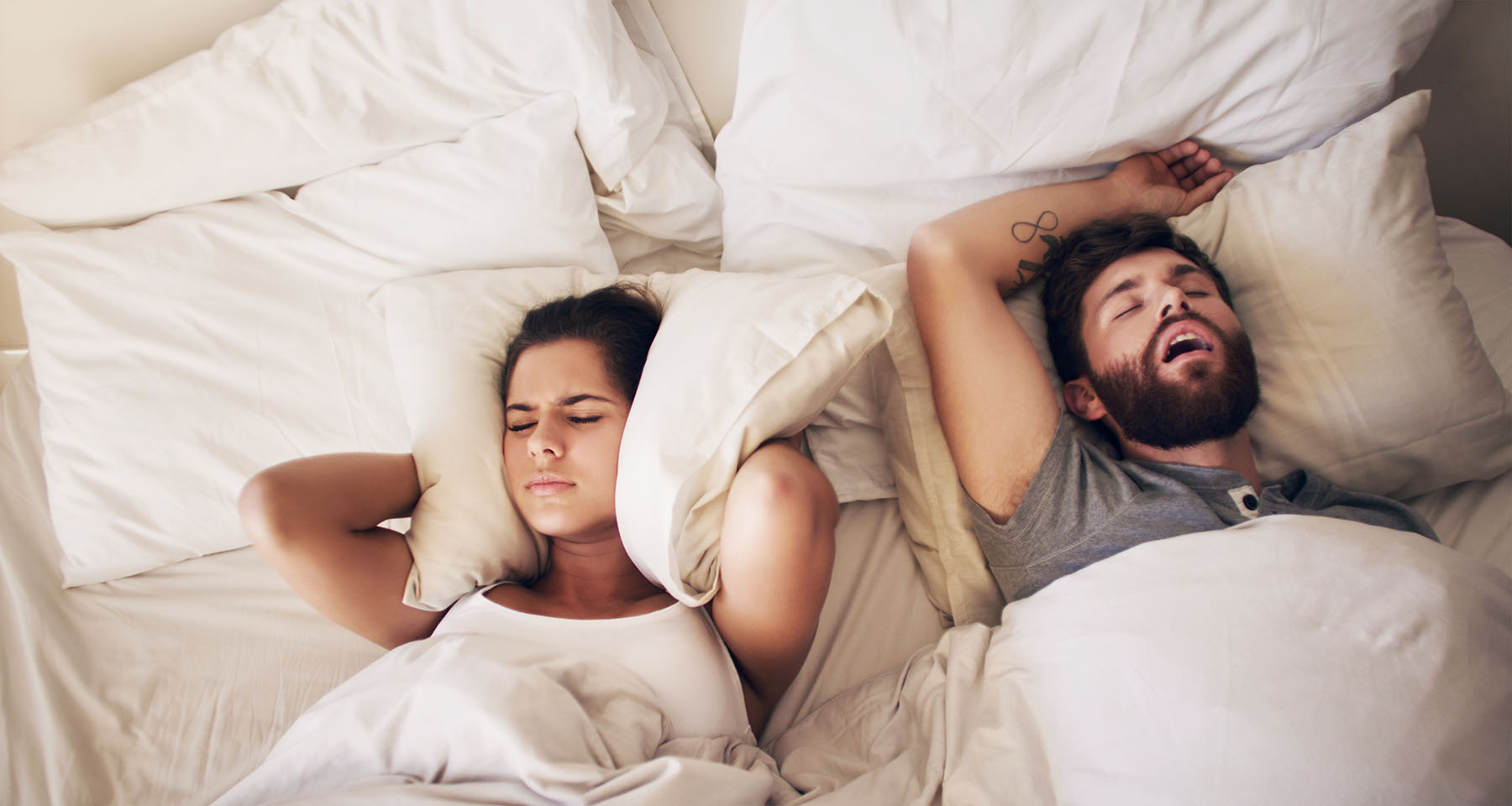Say Goodbye to Awkward Sleep Habits

Reunite after a sleep divorce with tailored sleep apnea treatment.
If sleep apnea or snoring is getting in the way of your relationship, you’re in good company. About 30 million Americans suffer from sleep apnea, according to the American Medical Association. Add in their roommates, and you have a lot of people losing shut-eye.
Many people with partners who snore loudly or jerk awake from sleep resort to sleeping in separate rooms. A survey from the American Academy of Sleep Medicine reports that over one-third of couples sleep in separate beds. Couples prioritizing sleep with two bedrooms are so common the trend has been coined a “sleep divorce.” Even Hollywood star Cameron Diaz has called for couples to “normalize separate bedrooms.”
Others are too embarrassed by obstructive sleep apnea or CPAP machines used to treat it to cohabitate in the first place.
Maria V. Suurna, M.D., an otolaryngologist specializing in sleep medicine at the University of Miami Health System, says couples don’t have to give up on sharing a room.
In fact, once Dr. Suurna reverses a patient’s sleep apnea, their spouses often are the first to thank her. “When you treat the sleep issues of one person, you’re treating the other person’s sleep as well,” says Dr. Suurna.
Why does sleep apnea lead to a sleep divorce?
Patients who visit Dr. Suurna often come in with their significant others. In many cases, it’s a partner who drags a patient with sleep apnea to see a specialist.
“It’s not unusual for a patient to tell me that I need to fix their snoring because otherwise their spouse will divorce them,” she says.
Snoring can be a symptom of obstructive sleep apnea, but that’s not always the case. Choking or gasping sounds are good indicators that sleep apnea is the culprit of your partner’s nightly symphony. That’s because sleep apnea is a disorder of airway obstruction.
Besides snoring, some other symptoms of sleep apnea include:
- Fatigue and daytime sleepiness
- Restless sleep
- Insomnia
- Morning headaches
- Frequent trips to the bathroom at night
- Difficulty concentrating
- Irritability
Sleep apnea doesn’t just leave people tired. If left untreated, severe sleep apnea can contribute to high blood pressure, heart disease, diabetes and depression.
A sleep study is used to determine whether disruptive sleep habits are caused by obstructive sleep apnea.
Multidisciplinary treatment for sleep apnea
In many sleep centers, the go-to treatment for obstructive sleep apnea is a CPAP machine. But only 30% of people tolerate the masks that blow pressurized air into their airways. For those in a new relationship, especially, it’s not the sexiest way to sleep. This leaves a lot of people unsupported and even untreated for sleep apnea. “The vast majority of people with sleep apnea are not being treated,” says Dr. Suurna.
CPAP is one of many available treatments to prevent the airway from collapsing. Other treatment options for sleep apnea include:
- Nerve stimulation treatment, where an implanted device stimulates the airway muscles.
- Traditional surgical procedures to remodel the airway –– like palate surgery, tongue surgery and skeletal surgery
- Medical or surgical weight loss
- Oral appliance that is worn at night to stabilize the airway by advancing the jaw
The right treatment depends on the cause and severity of sleep apnea and the patient’s preference.
The sleep medicine center at UHealth brings physicians from multiple disciplines together to diagnose and treat patients with sleep apnea.
Research pushes the future of sleep treatment forward.
The prevalence of obstructive sleep apnea cases means that researchers are increasingly developing new ways to treat it. UHealth patients can enroll in clinical trials for new devices and treatments. Current clinical trials to treat sleep apnea are focused on using implantable devices that stimulate the airway muscles. Another clinical trial, set to start in 2024, is a noninvasive treatment that uses cooling to shrink fat cells in upper airway tissue that cause airway obstruction.
With multiple treatment options available, it’s likely time to seek help if your partner’s sleep problems are enough to rattle the bed.
Still, says Dr. Suurna, couples who maintain a separate sleeping arrangement shouldn’t feel ashamed.
“Simply put, people do sleep better if they sleep without a bed partner,” she says.
Wendy Margolin is a contributor to UHealth’s news service.
Tags: amount of sleep, central sleep apnea, Dr. Maria Suurna, sleep apnea
